The history of game consoles in advertising. Part 1: From Magnavox Odyssey to Super Nintendo
Warm lamp Dendy gave me a new year when I was eight years old. Half the night my father tried to add her to the TV, and he succeeded! And later my younger brother came to visit me with a sports bag in which he drove a Sony PlayStation and several CDs to it ...
The topic of today's post is the history of game consoles in advertising. I also added videos - in advertising, gameplay is often used, which will help to understand the whole atmosphere of the console. I had to divide the post into two parts, as under the cut - about 70 images and videos.
For starters, a tennis ad for the Sega Mega Drive.
')
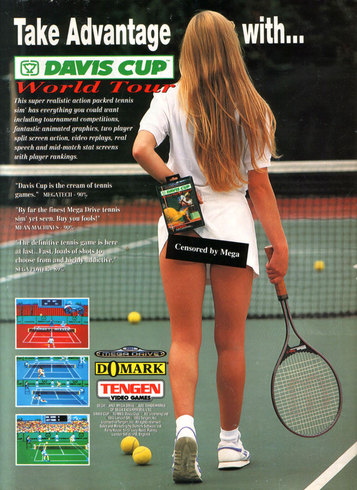
Ralph Baer, Bill Harrison, and Bill Rusch created the prototype of the Brown Box. He had two controllers, a game gun, and sixteen switches. In 1969, Baer was able to negotiate production with Magnavox, and in 1972 Magnavox Odyssey went on sale. Cartridges were a set of jumpers, including one of the games already available in the console.
About 330 thousand copies were sold, the prefix was worth around a hundred dollars.
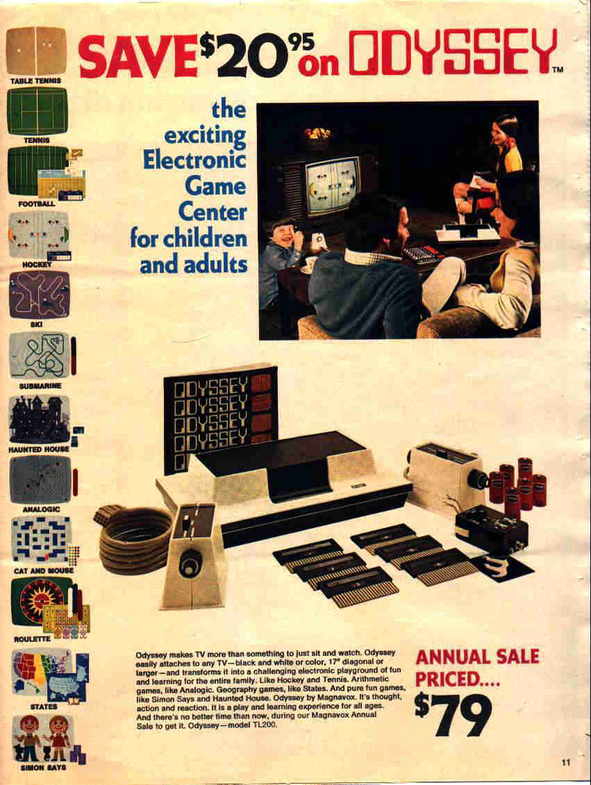
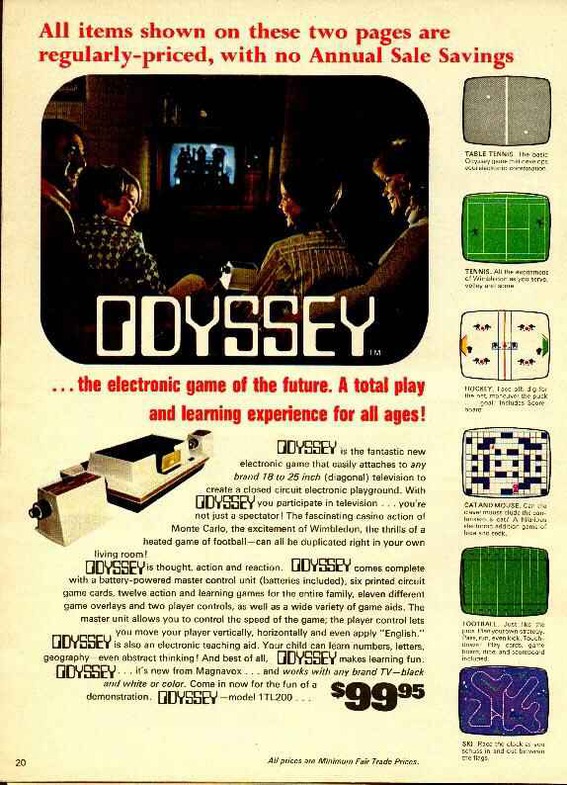

Another bright prefix of the first generation - Atari Pong. The carrier was a built-in chip. Sold 150 thousand of these consoles.
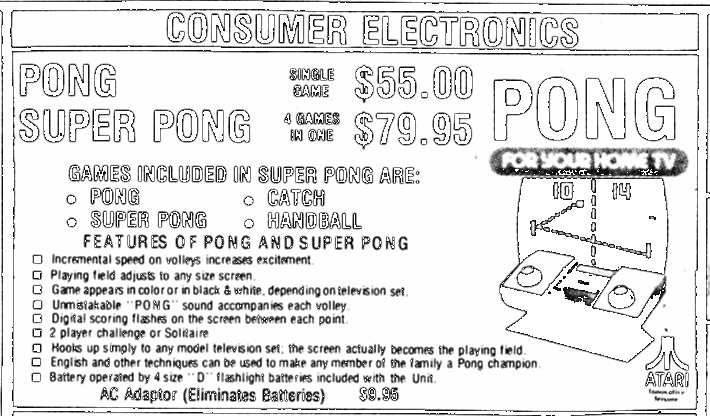

In 1975, the new version of Magnavox Odyssey was released - this time the built-in chip becomes the carrier for games, and no cartridges are needed to switch them.
The company Magnavox at that time for a year as belonged to Philips. Interestingly, Magnavox (existing since 1917) produces electronics for defensive armaments — for example, AN / ARC-164 VHF radio, hydro-acoustic buoys, a series of electronic weapons systems, and the Advanced Tactical Data System.

Coleco in 1976 released the first modification of its prefix Telstar. It was a clone of Pong. It was created 15 modifications due to the fact that the console quickly gained popularity. Games were stored both on the integrated chip and on the cartridges.
Sold about a million pieces. The price is fifty US dollars.
Nintendo Color TV Game appeared on the market in 1977 - this is a TV game console with 6 types of light tennis. Management was carried out using discs on the console. Read more about the work of Nintendo - in the post History of Nintendo led by Hiroshi Yamauchi .
It has sold more than three million consoles. The price is ¥ 8,300 - ¥ 48,000.
This ad also has a racing simulator, a Game Racing 112 game console.
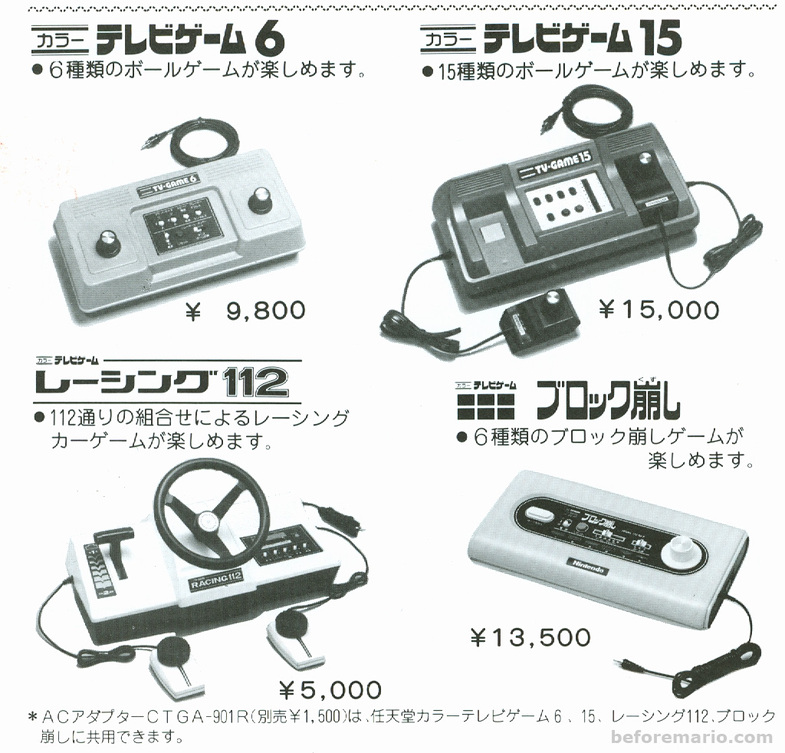
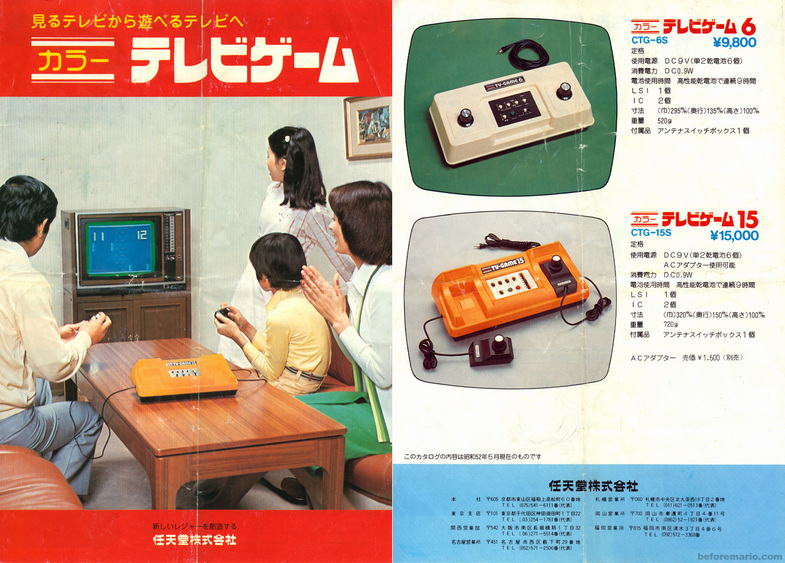
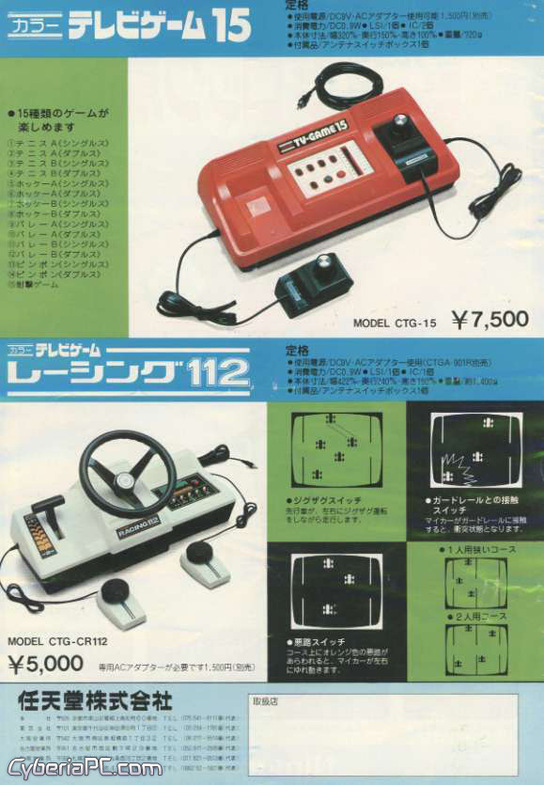
In the aforementioned Magnavox Odyssey, the games were in the console itself, and the cartridges were a set of jumpers that included one of these games. The second generation of game consoles was different in that the number of games was not limited to those built into the console - users received an extensive library of games on cartridges.
Fairchild Semiconductors was one of the key firms of Silicon Valley in the 1960s. It was in this company that the Fairchild VES game console was built on the basis of the Fairchild F8 microprocessor, the first console on cartridges containing games. Robert Noyce, who developed this microprocessor, later left the company and founded Intel.
The prefix went on sale in 1976 at a price of 169.95 US dollars.
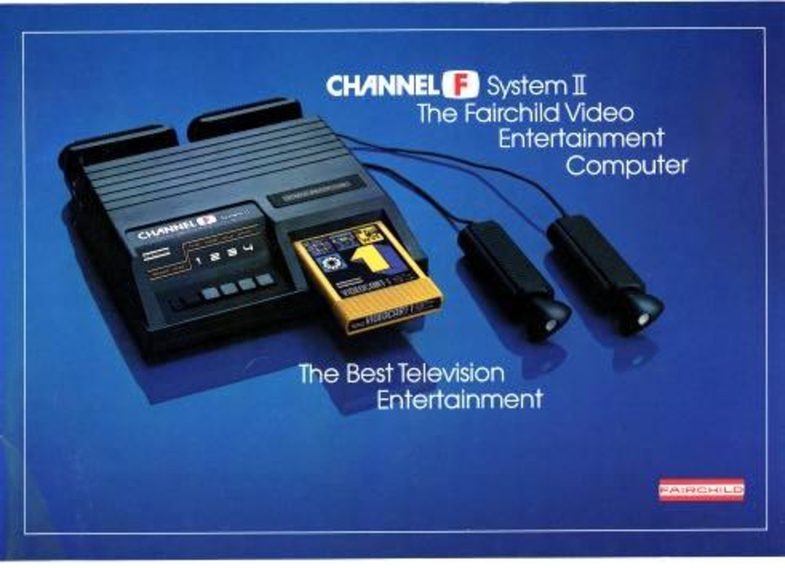
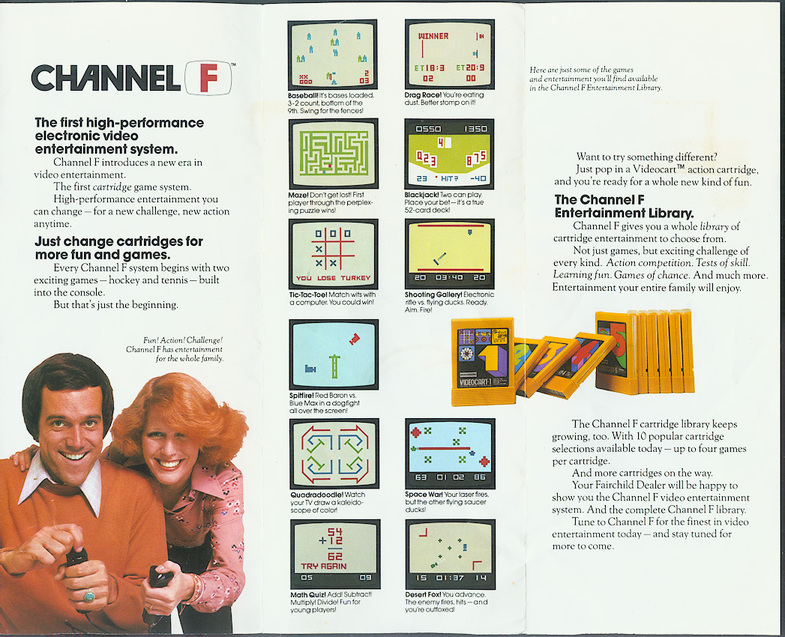
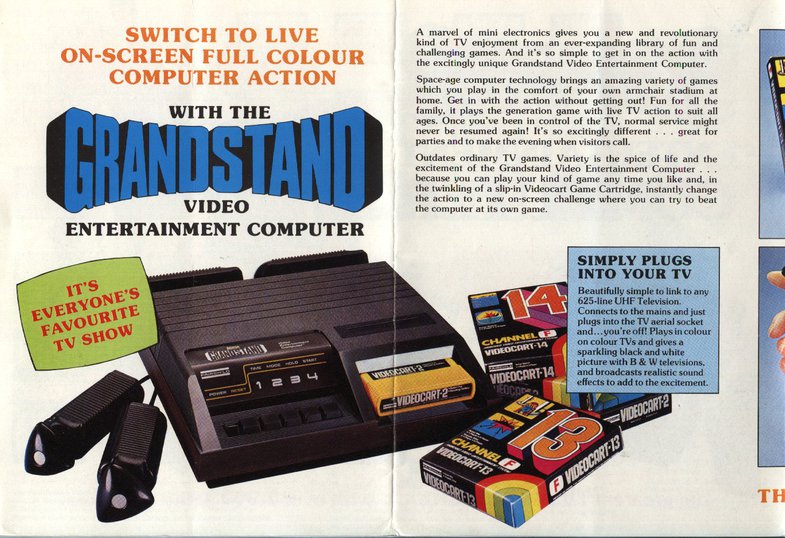
By Christmas 1977, the Atari 2600 goes on sale. It becomes one of the most common consoles in the 70s-80s of the 20th century: more than forty million pieces sold! It was worth the pleasure - the console and one cartridge - $ 199.
Here is a selection of the best TV commercials Atari 2600. By the way, in the first one is young Jack Black. I was surprised when I found him here.
In this video, Pele himself starred.
This video is for the Spanish market. Soundtrack is dangerous for your brain.


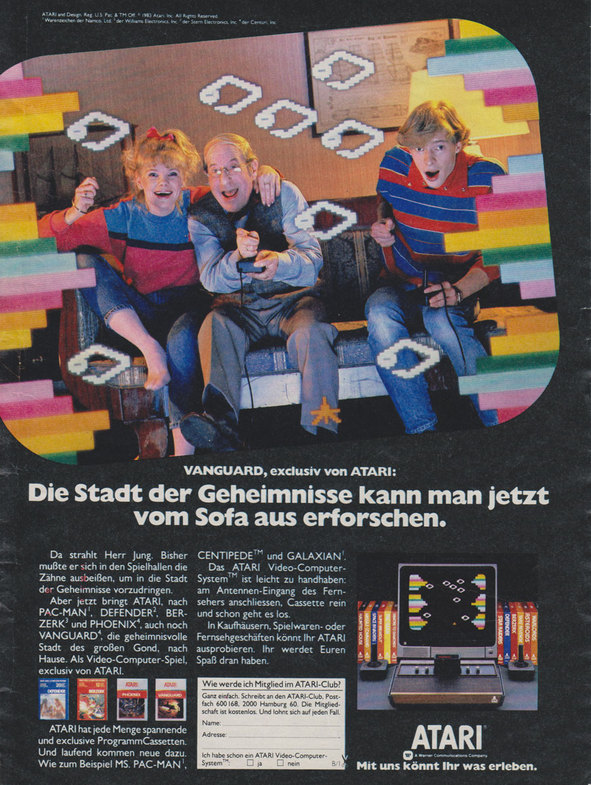
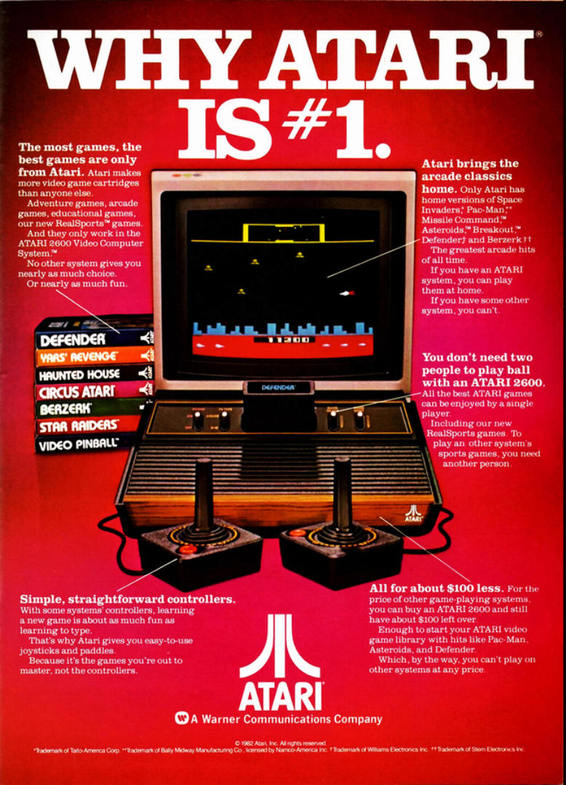
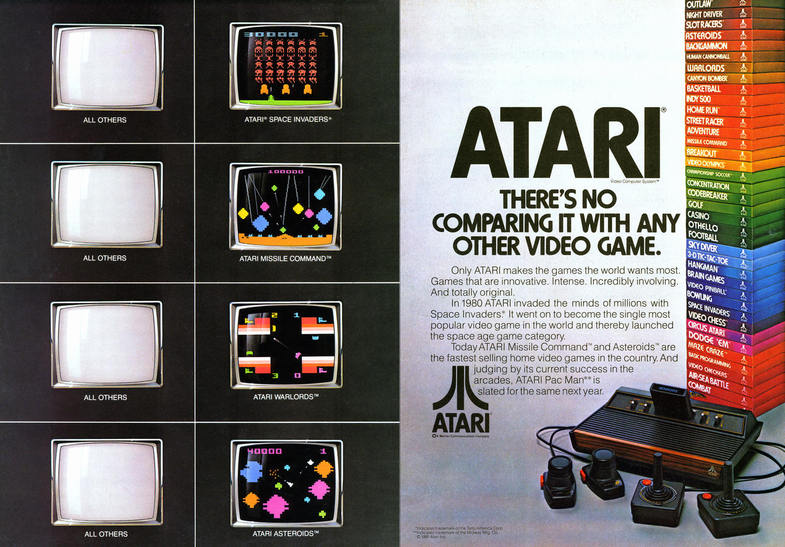
This is the first wireless joystick for Atari. Correct, if they did not come to the 2600, and were made later.

In 1978, the company Magnavox, in order to keep up with the market, releases Odyssey 2. The uniqueness of the console was that it had a full alphanumeric keyboard - it was possible to learn and program on it.
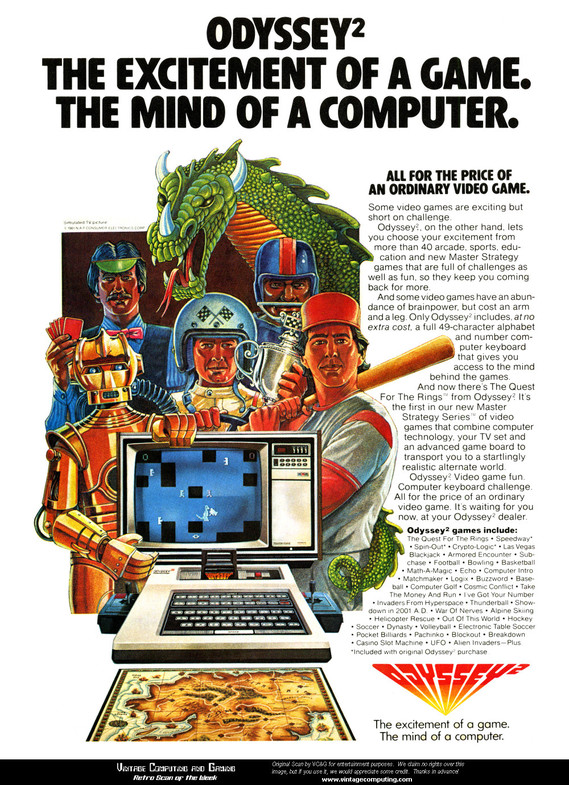
In addition, a speech synthesis module was released for Odyssey 2 as an additional module for speech / music / sound effects.
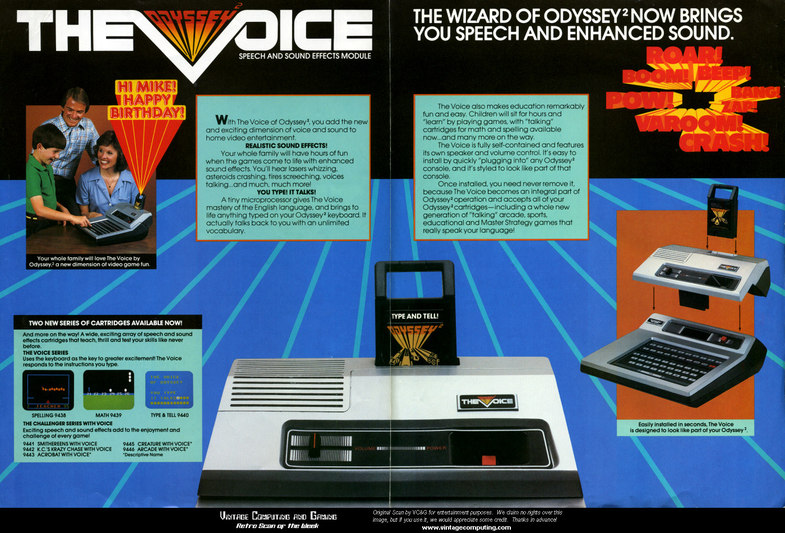
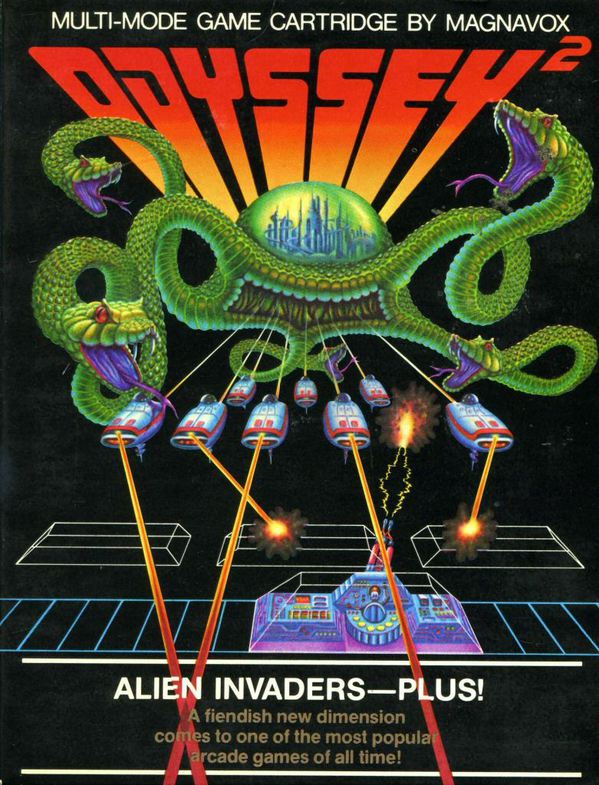
In 1979 Intellivision from Mattel entered the arena. The company planned to beat Atari VCS with advanced graphics and good games for that time, as well as an additional keyboard - as was the case with Odyssey 2, it had to turn the toy into a personal computer. However, the normal keyboard was never released - they broke. But in 1982 they released Intellivoice - the module gave some games voice support, which was unique at that time.
Now you can tell the difference between Intellivision and Atari. With eyes closed.
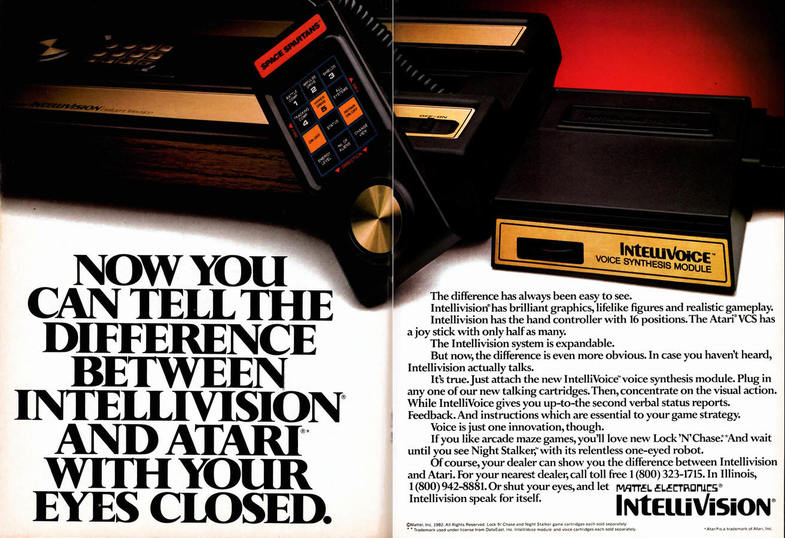
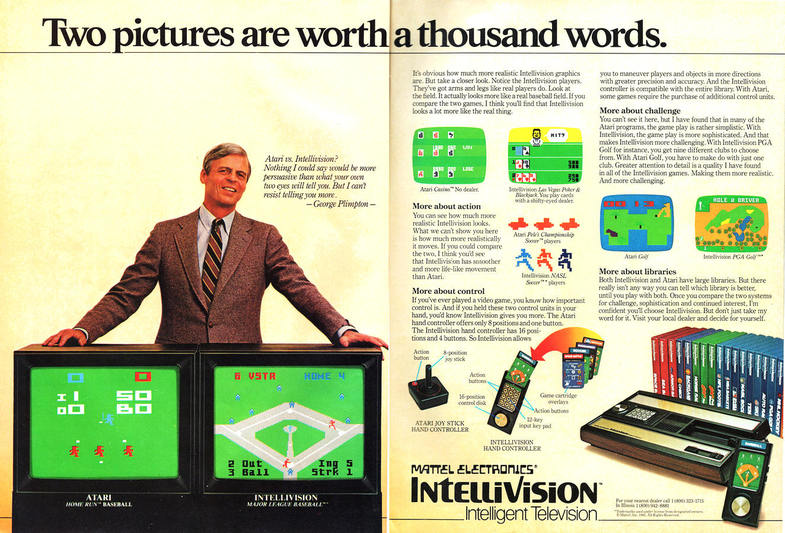

The 5200 was designed to replace its predecessor, the Atari 2600, as one of the most popular consoles. In addition, it had to compete with Intellivision. However, the console was not very successful - it was inconvenient due to errors in the design.
Please note - at the sixth second in the video appears Jim Carrey, then not yet very famous.
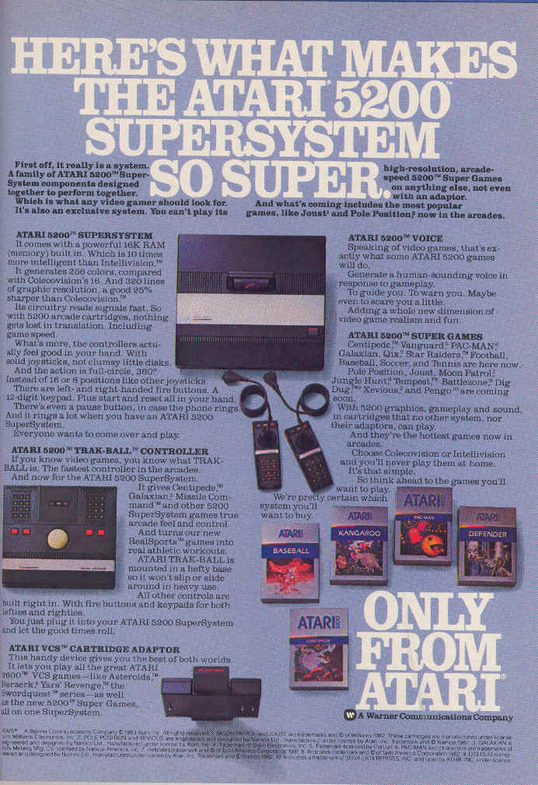
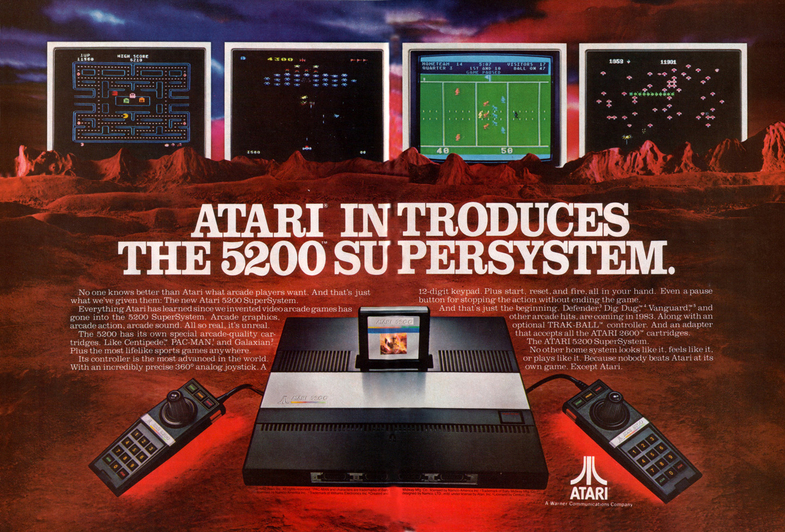
The Vectrex console did not need to be connected to the TV - it had its own vector graphic monitor. That’s what makes it unique - neither before nor after Vectrex, not a single console used such a configuration. A translucent film was superimposed on the monitor, for each game - its own, to reduce flicker and give the illusion of color. The console cost $ 199 and was sold from 1982 to 1984.
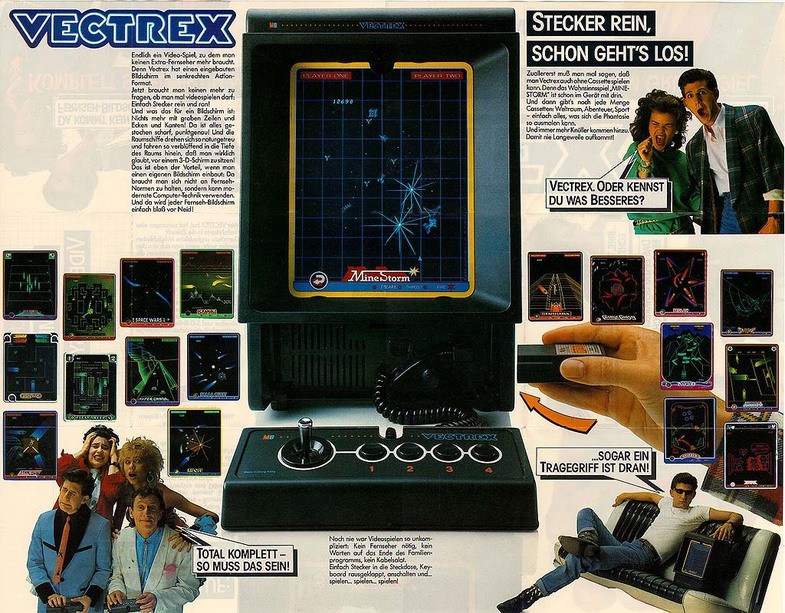
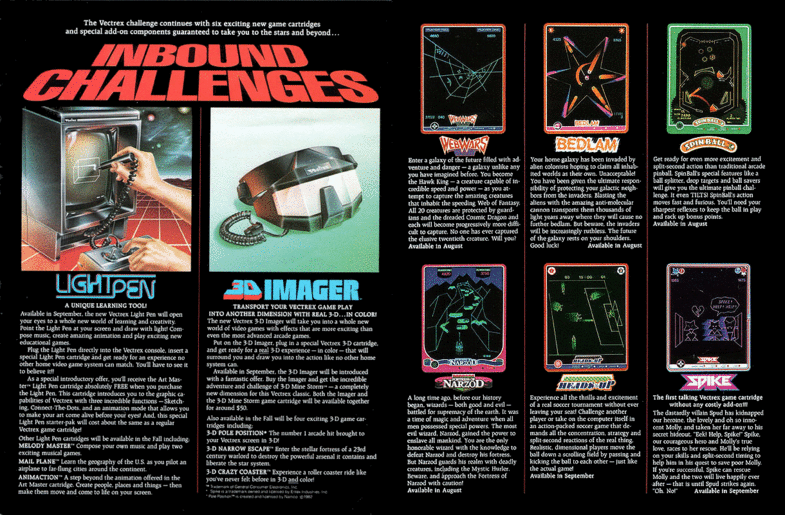
The 8-bit Arcadia 2001 console was born stillborn. Graphics capabilities were similar to Intellivision and Odyssey², but at the same time more advanced Atari 5200 and ColecoVision have already entered the market.
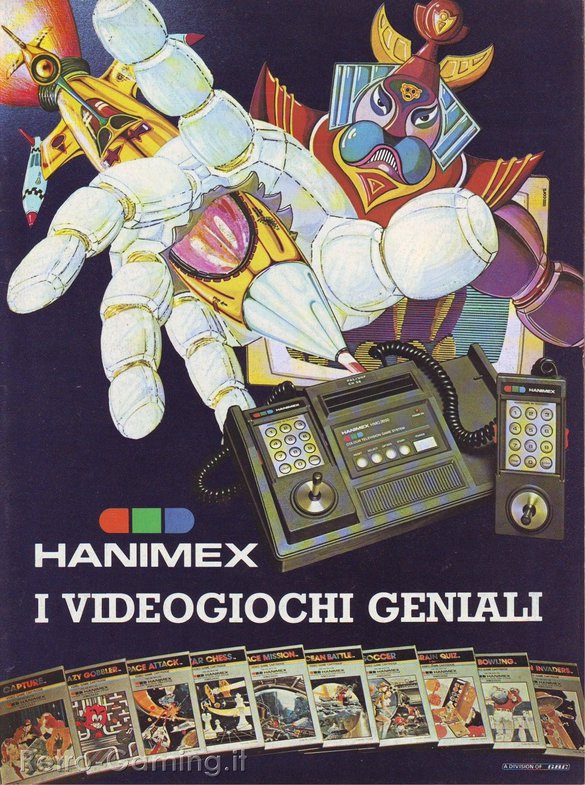
ColecoVision graphics and gameplay were at the level of slot machines. In addition, it allowed the use of games from other consoles, including the Atari 2600. From 1982 to 1985, about 170 games were released for the console. On cartridges, of course.
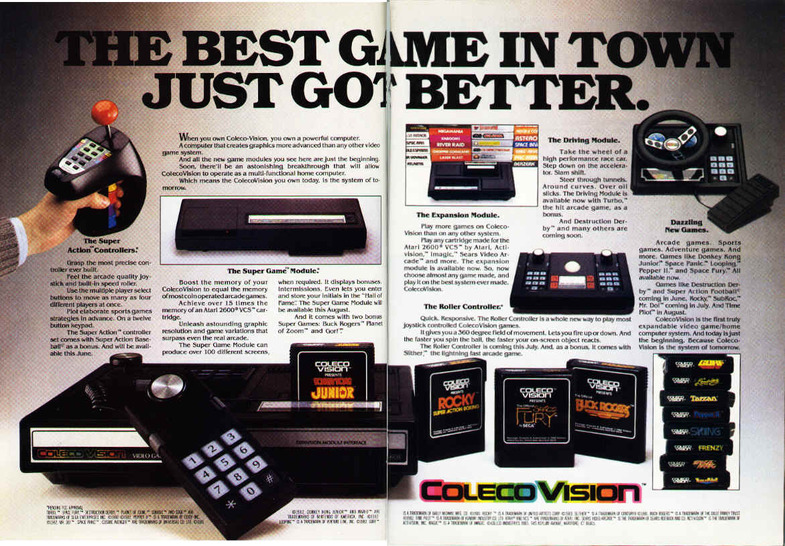
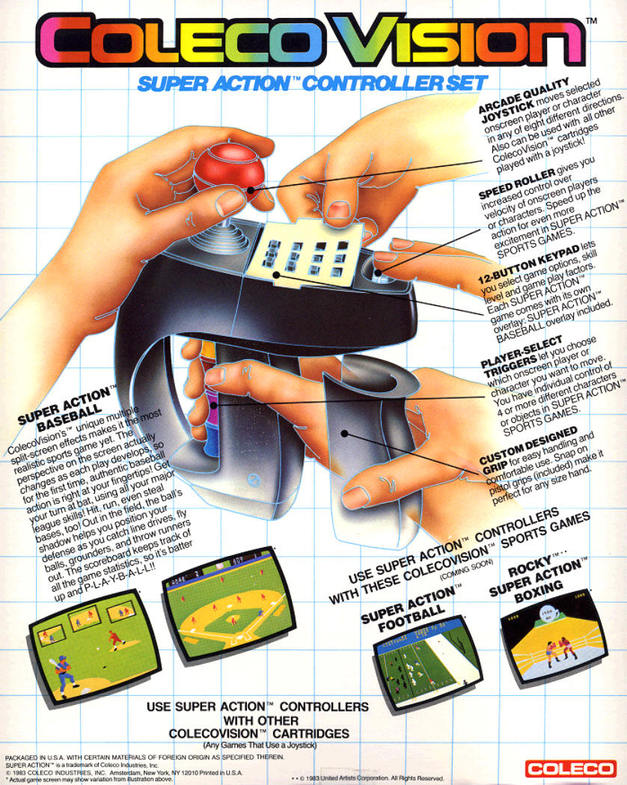
In 1981, trial sales of the first game console from Sega - SEGA Game 1000 begin in Japan. Keep a selection of videos in the traditional Japanese hellish style.
Astrocade also has a cartridge with the programming language BASIC, and the ZGRASS module turned the console into a computer with a keyboard, a mathematical Coprocessor (FPU), 32K RAM, and 32K ROM. And with sales from the console did not grow together.
In July 1983, sales of the Nintendo Entertainment System, a third-generation, eight-bit gaming console, will start in Japan. It is her (or rather, her clone) in Russia will be recognized under the name of Super Dendy.
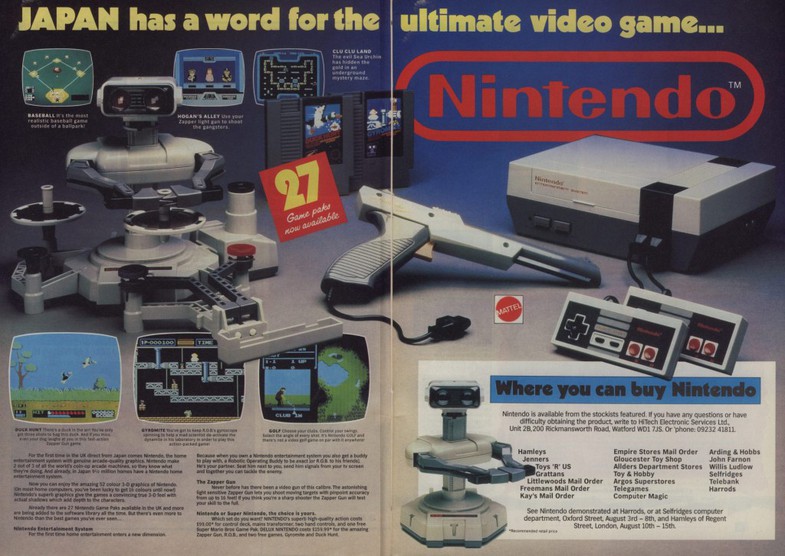

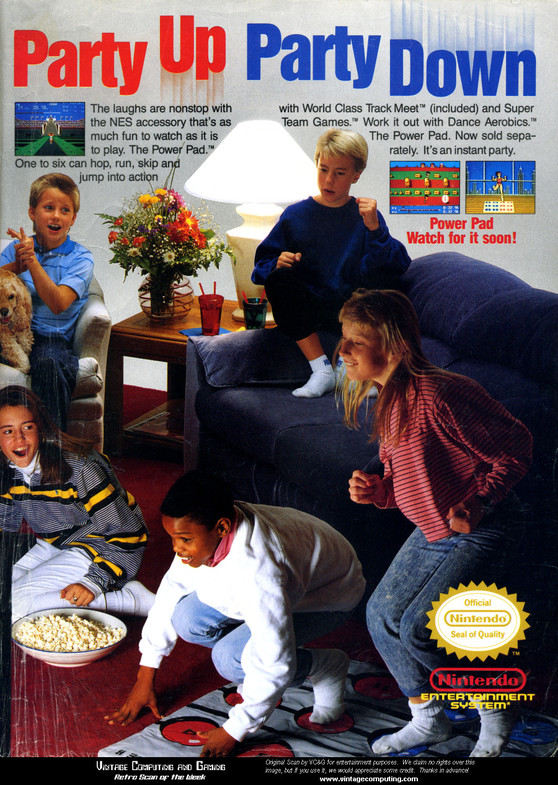
Russian advertising Dendy:
In 1986, Nintendo NES owned 90% of the game console market, and Sega Master System and Atari the remaining 10%. After the appearance of the Master System, in four months they sold 125,000 consoles, during the same period of time Nintendo sold two million. The prefix had no success.


Need morezoite Atari! - thought at Atari and released the 7800 in June 1986. The prefix was supposed to replace the unsuccessful 5600. It cost less than the previous one - only $ 140, and was fully compatible with the Atari 2600.
The system could be supplemented to a full-fledged home computer, it was necessary only to purchase a keyboard, which had a port for connecting a floppy drive or printer.

In the early 1990s, a GX4000 prefix based on the Amstrad CPC 6128+ home computer was sold for a couple of years. She didn’t just have no success - she’s considered the biggest failure in the gaming console industry. Despite the fact that, technically, the console was very advanced (there were 4096 colors in the palette, while there were only 52 colors in the NES, and in the Sega Mega Drive it was 512 colors), it was a bit late — after all, the dawn began at that time 16 -bit gaming systems.
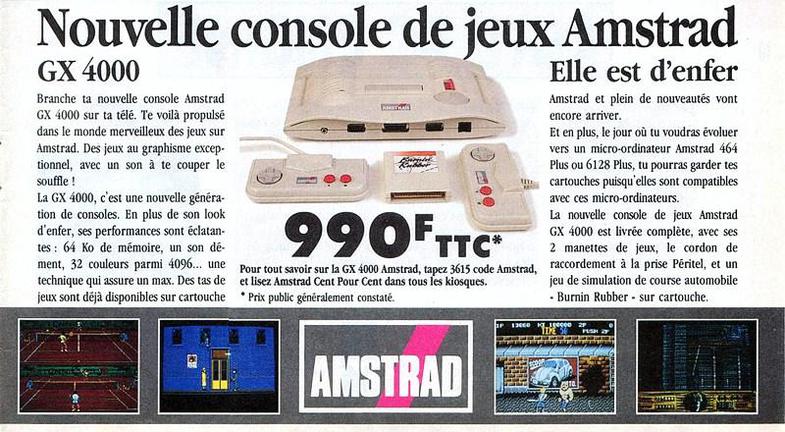
In 1987, the dawn of 16-bit gaming systems began. The first prefix of the fourth generation was the NEC PC Engine, and the struggle for the market between Nintendo and Sega was one of the most significant chapters in the history of video games.
The graphics processor of this console was able to display 482 colors simultaneously. The games were on cartridges and CDs, which could be played with an additional CD drive.
In 1988, the fourth-generation Sega Mega Drive appeared on the market. The prefix is still sold in the US, Europe and Brazil. Yes, and in Russia, I saw her.
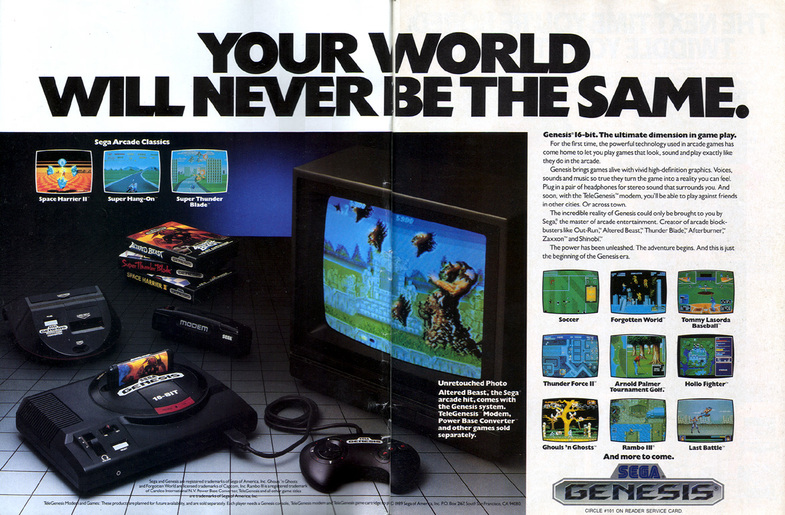
In advertising Mega Drive sometimes used sexual overtones.
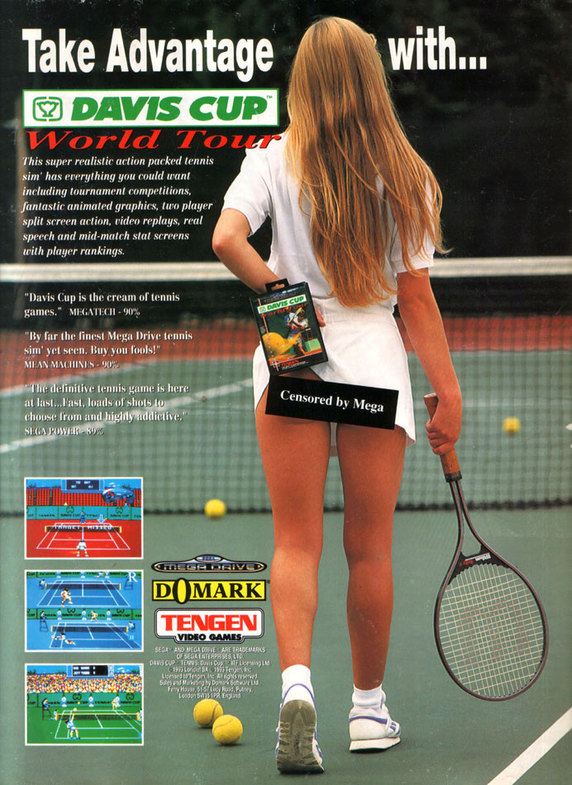
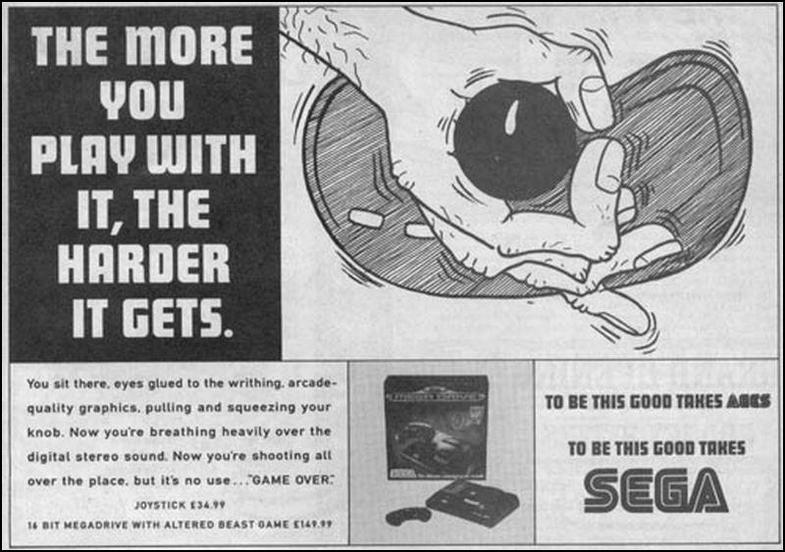
From 1990 to 1999, 49 million 16-bit Super Nintendo were sold. This was the prefix of my cousins, especially we loved to play Donkey Kong and Mario. According to graphics and sound in 1990, this set-top box broke all records, and the development of chips embedded in cartridges allowed it to remain competitive even after the release of the next-generation set-top boxes.
Cost prefix 199 dollars.
1991 advertising with Paul Rudd, who for 22 years has not changed at all.
Achievements of computer graphics make in fear of hiding under the table.
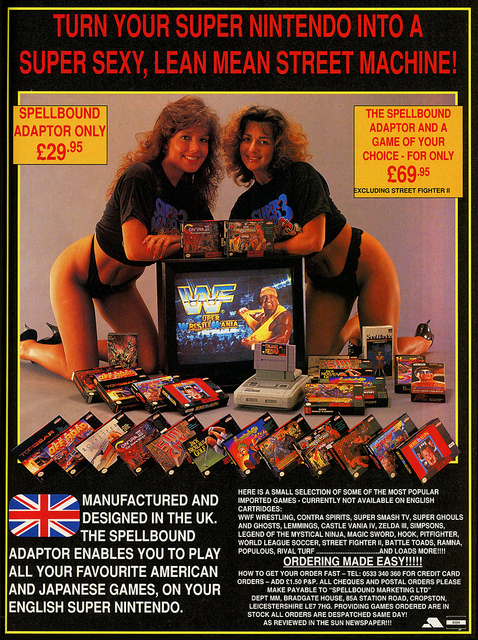

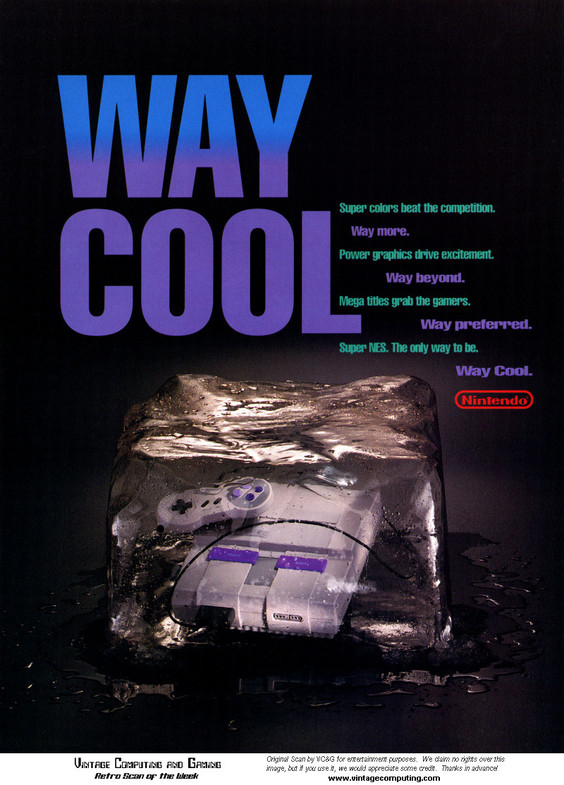
The Neo-Geo gaming system is better known as the system for gaming machines, but there was also a home version - its sales began in 1990. The prefix was not successful because of its high cost - the “silver” version cost $ 399, and the “gold” version - 649 .
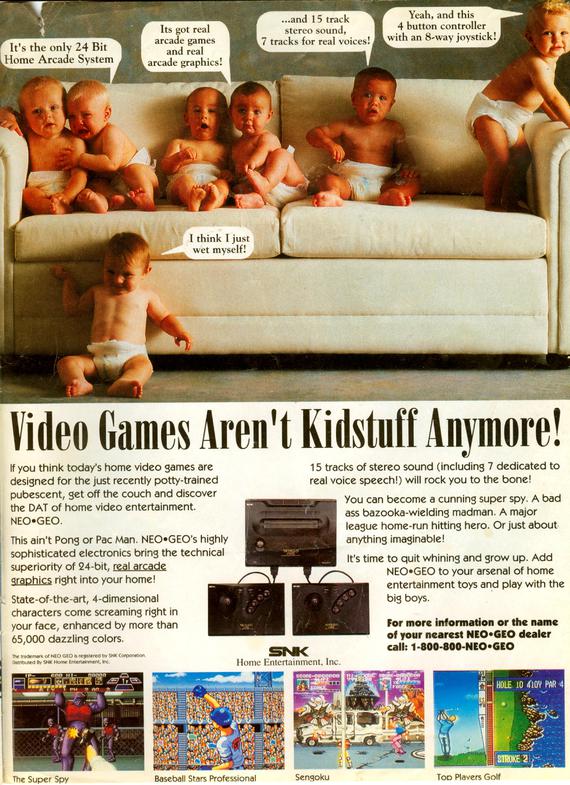
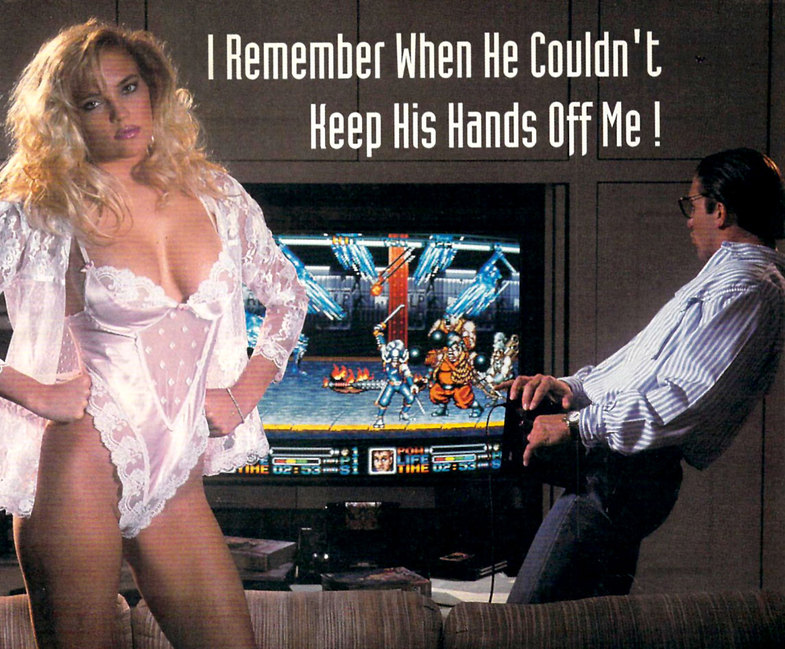
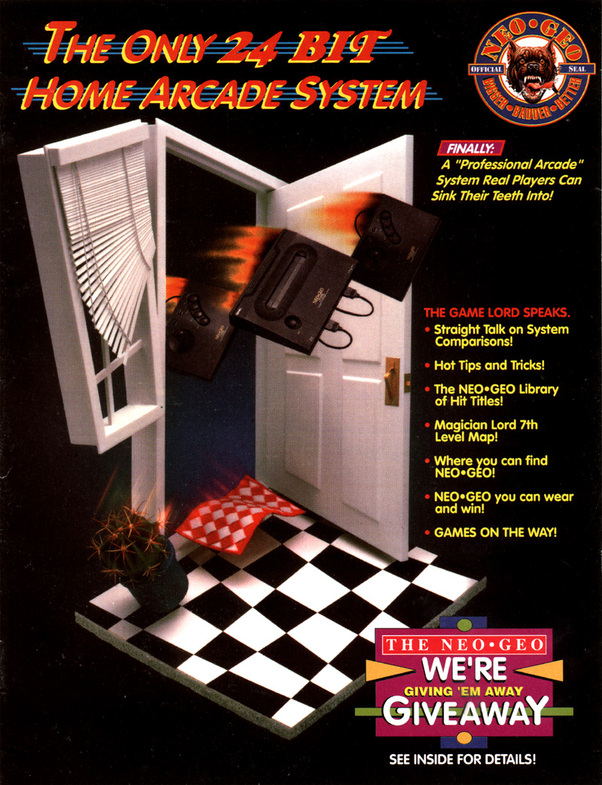
In the next part we will talk about the PlayStation, DreamCast, Xbox and other consoles.
It is interesting:
The history of game consoles in advertising. Part 2
Nintendo story led by Hiroshi Yamauchi
Motion control in games
The history of personal computers in advertising. Part 3: 1990s
Soviet personal computers
The topic of today's post is the history of game consoles in advertising. I also added videos - in advertising, gameplay is often used, which will help to understand the whole atmosphere of the console. I had to divide the post into two parts, as under the cut - about 70 images and videos.
For starters, a tennis ad for the Sega Mega Drive.
')

First generation
Magnavox odyssey
Ralph Baer, Bill Harrison, and Bill Rusch created the prototype of the Brown Box. He had two controllers, a game gun, and sixteen switches. In 1969, Baer was able to negotiate production with Magnavox, and in 1972 Magnavox Odyssey went on sale. Cartridges were a set of jumpers, including one of the games already available in the console.
About 330 thousand copies were sold, the prefix was worth around a hundred dollars.



Atari pong
Another bright prefix of the first generation - Atari Pong. The carrier was a built-in chip. Sold 150 thousand of these consoles.


Magnavox odyssey
In 1975, the new version of Magnavox Odyssey was released - this time the built-in chip becomes the carrier for games, and no cartridges are needed to switch them.
The company Magnavox at that time for a year as belonged to Philips. Interestingly, Magnavox (existing since 1917) produces electronics for defensive armaments — for example, AN / ARC-164 VHF radio, hydro-acoustic buoys, a series of electronic weapons systems, and the Advanced Tactical Data System.

Telstar
Coleco in 1976 released the first modification of its prefix Telstar. It was a clone of Pong. It was created 15 modifications due to the fact that the console quickly gained popularity. Games were stored both on the integrated chip and on the cartridges.
Sold about a million pieces. The price is fifty US dollars.
Nintendo Color TV Game
Nintendo Color TV Game appeared on the market in 1977 - this is a TV game console with 6 types of light tennis. Management was carried out using discs on the console. Read more about the work of Nintendo - in the post History of Nintendo led by Hiroshi Yamauchi .
It has sold more than three million consoles. The price is ¥ 8,300 - ¥ 48,000.
This ad also has a racing simulator, a Game Racing 112 game console.



Second generation
In the aforementioned Magnavox Odyssey, the games were in the console itself, and the cartridges were a set of jumpers that included one of these games. The second generation of game consoles was different in that the number of games was not limited to those built into the console - users received an extensive library of games on cartridges.
Fairchild VES
Fairchild Semiconductors was one of the key firms of Silicon Valley in the 1960s. It was in this company that the Fairchild VES game console was built on the basis of the Fairchild F8 microprocessor, the first console on cartridges containing games. Robert Noyce, who developed this microprocessor, later left the company and founded Intel.
The prefix went on sale in 1976 at a price of 169.95 US dollars.



Atari 2600
By Christmas 1977, the Atari 2600 goes on sale. It becomes one of the most common consoles in the 70s-80s of the 20th century: more than forty million pieces sold! It was worth the pleasure - the console and one cartridge - $ 199.
Here is a selection of the best TV commercials Atari 2600. By the way, in the first one is young Jack Black. I was surprised when I found him here.
In this video, Pele himself starred.
This video is for the Spanish market. Soundtrack is dangerous for your brain.





This is the first wireless joystick for Atari. Correct, if they did not come to the 2600, and were made later.

Magnavox Odyssey 2
In 1978, the company Magnavox, in order to keep up with the market, releases Odyssey 2. The uniqueness of the console was that it had a full alphanumeric keyboard - it was possible to learn and program on it.

In addition, a speech synthesis module was released for Odyssey 2 as an additional module for speech / music / sound effects.


Intellivision
In 1979 Intellivision from Mattel entered the arena. The company planned to beat Atari VCS with advanced graphics and good games for that time, as well as an additional keyboard - as was the case with Odyssey 2, it had to turn the toy into a personal computer. However, the normal keyboard was never released - they broke. But in 1982 they released Intellivoice - the module gave some games voice support, which was unique at that time.
Now you can tell the difference between Intellivision and Atari. With eyes closed.



Atari 5200
The 5200 was designed to replace its predecessor, the Atari 2600, as one of the most popular consoles. In addition, it had to compete with Intellivision. However, the console was not very successful - it was inconvenient due to errors in the design.
Please note - at the sixth second in the video appears Jim Carrey, then not yet very famous.


Vectrex
The Vectrex console did not need to be connected to the TV - it had its own vector graphic monitor. That’s what makes it unique - neither before nor after Vectrex, not a single console used such a configuration. A translucent film was superimposed on the monitor, for each game - its own, to reduce flicker and give the illusion of color. The console cost $ 199 and was sold from 1982 to 1984.


Arcadia 2001
The 8-bit Arcadia 2001 console was born stillborn. Graphics capabilities were similar to Intellivision and Odyssey², but at the same time more advanced Atari 5200 and ColecoVision have already entered the market.

ColecoVision
ColecoVision graphics and gameplay were at the level of slot machines. In addition, it allowed the use of games from other consoles, including the Atari 2600. From 1982 to 1985, about 170 games were released for the console. On cartridges, of course.


Sega Game 1000
In 1981, trial sales of the first game console from Sega - SEGA Game 1000 begin in Japan. Keep a selection of videos in the traditional Japanese hellish style.
Bally astrocade
Astrocade also has a cartridge with the programming language BASIC, and the ZGRASS module turned the console into a computer with a keyboard, a mathematical Coprocessor (FPU), 32K RAM, and 32K ROM. And with sales from the console did not grow together.
Third generation
Famicom / NES
In July 1983, sales of the Nintendo Entertainment System, a third-generation, eight-bit gaming console, will start in Japan. It is her (or rather, her clone) in Russia will be recognized under the name of Super Dendy.



Russian advertising Dendy:
Sega master system
In 1986, Nintendo NES owned 90% of the game console market, and Sega Master System and Atari the remaining 10%. After the appearance of the Master System, in four months they sold 125,000 consoles, during the same period of time Nintendo sold two million. The prefix had no success.


Atari 7800
Need more
The system could be supplemented to a full-fledged home computer, it was necessary only to purchase a keyboard, which had a port for connecting a floppy drive or printer.

Amstrad GX4000
In the early 1990s, a GX4000 prefix based on the Amstrad CPC 6128+ home computer was sold for a couple of years. She didn’t just have no success - she’s considered the biggest failure in the gaming console industry. Despite the fact that, technically, the console was very advanced (there were 4096 colors in the palette, while there were only 52 colors in the NES, and in the Sega Mega Drive it was 512 colors), it was a bit late — after all, the dawn began at that time 16 -bit gaming systems.

Fourth generation
In 1987, the dawn of 16-bit gaming systems began. The first prefix of the fourth generation was the NEC PC Engine, and the struggle for the market between Nintendo and Sega was one of the most significant chapters in the history of video games.
NEC PC Engine
The graphics processor of this console was able to display 482 colors simultaneously. The games were on cartridges and CDs, which could be played with an additional CD drive.
Sega mega drive
In 1988, the fourth-generation Sega Mega Drive appeared on the market. The prefix is still sold in the US, Europe and Brazil. Yes, and in Russia, I saw her.

In advertising Mega Drive sometimes used sexual overtones.


Super Nintendo Entertainment System
From 1990 to 1999, 49 million 16-bit Super Nintendo were sold. This was the prefix of my cousins, especially we loved to play Donkey Kong and Mario. According to graphics and sound in 1990, this set-top box broke all records, and the development of chips embedded in cartridges allowed it to remain competitive even after the release of the next-generation set-top boxes.
Cost prefix 199 dollars.
1991 advertising with Paul Rudd, who for 22 years has not changed at all.
Achievements of computer graphics make in fear of hiding under the table.



Neo-geo
The Neo-Geo gaming system is better known as the system for gaming machines, but there was also a home version - its sales began in 1990. The prefix was not successful because of its high cost - the “silver” version cost $ 399, and the “gold” version - 649 .



In the next part we will talk about the PlayStation, DreamCast, Xbox and other consoles.
It is interesting:
The history of game consoles in advertising. Part 2
Nintendo story led by Hiroshi Yamauchi
Motion control in games
The history of personal computers in advertising. Part 3: 1990s
Soviet personal computers
Source: https://habr.com/ru/post/213527/
All Articles